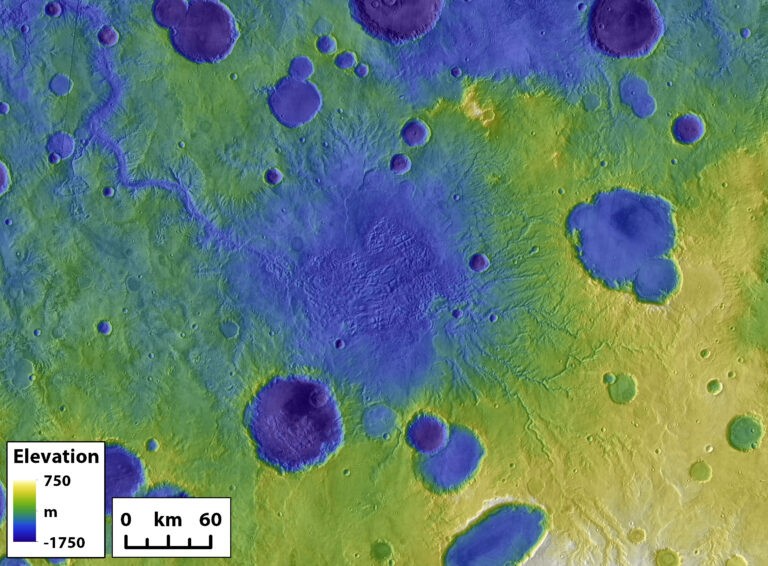Recent research shows that rapid and violent floods from overflowing craters altered the landscape of Mars.
Massive floods from overflowing crater lakes shaped the Martian landscape dramatically, while river erosion on Earth is generally gradual.
According to the findings, they created enormous chasms and transported massive volumes of material.
The study discovered that the floods, which lasted only a few weeks, removed enough material to entirely fill Lake Superior and Lake Ontario, two of the world's biggest lakes.
Lead author Tim Goudge, an associate professor at the University of Texas Jackson School of Geosciences, said lake breach floods are a critical process in a statement.
The findings surprised Goudge since the floods had been regarded as one-off occurrences for so long.

Mars Surface Shaped by Floods From Overflowing Craters
When Mars had liquid water on its surface billions of years ago, crater lakes were abundant.
While some craters could store the equivalent of a small sea, it would spill over the crater's edge when the water got too much to hold, creating catastrophic floods that formed river valleys in its wake.
According to a 2019 study headed by Prof Goudge, these occurrences occurred quickly. The study title is "Incision of Paleolake Outlet Canyons on Mars From Overflow Flooding."
Tech Radar said scientists had analyzed the remains of ruptured Martian crater lakes thanks to images obtained by satellites orbiting Mars.
The crater lakes and associated river valleys, on the other hand, have largely been researched on a case-by-case basis.
According to the researchers, this is the first study examining how the red planet's 262 ruptured lakes altered the whole surface.
Overflowing Crater Lakes Made Canyons Across Mars
The researchers analyzed the depth, length, and volume of various valley types. They discovered that river valleys created by crater lake breaches punch well above their weight, eroding roughly a quarter of the planet's river valley volume but accounting for only 3% of the total valley length.
Study co-author Alexander Morgan, a research scientist at the Planetary Science Institute in the United States, said in an IFLScience report that this disparity is accounted for because outlet canyons are much deeper than other valleys.
The typical depth of a breach river valley is 170.5 meters (559 feet), more than double that of other river valleys formed through time, which have a median depth of around 77.5 meters (254 feet).
Although the gaps emerged in a geologic flash, the experts believe they impacted the surrounding terrain long-term.
According to the study, the breaches scraped canyons so deeply that they may have affected the development of other neighboring river basins.
According to the researchers, this is a possible alternate explanation for the distinctive Martian river valley morphology generally linked to climate.
Researchers shared the details of their study, titled "The Importance of Lake Breach Floods for Valley Incision on Early Mars," in Nature.
RELATED ARTICLE : Mars Had Thousands of Massive Volcanic Eruptions That Changed Its Climate 4 Billion Years Ago, NASA Reveals
Check out more news and information on Space in Science Times.












